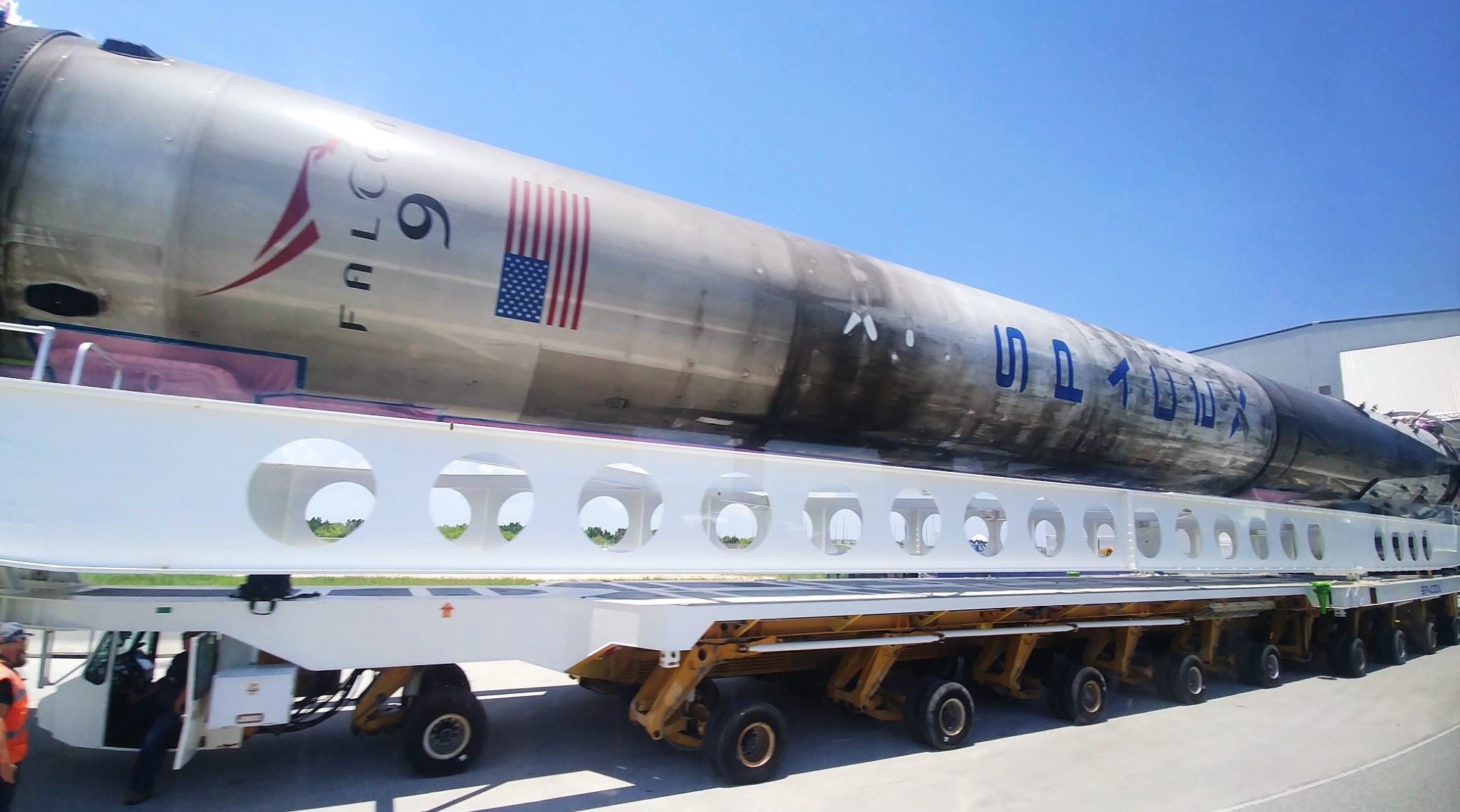
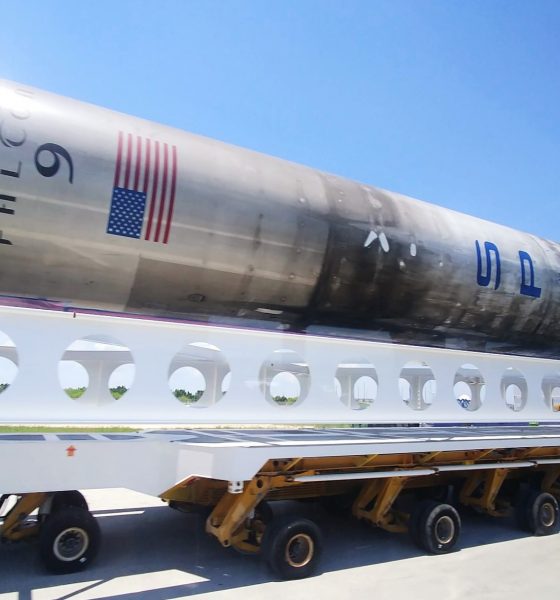
News
SpaceX fan spots sooty Falcon 9 Block 5 booster at Kennedy Space Center
On July 2nd, Twitter user Sideralmente (@astroperinaldo) spotted a sooty Falcon 9 Block 5 booster arriving at SpaceX’s Pad 39A hangar facilities, currently operating as a sort of defacto refurbishment hub.
Likely a prelude to a near-term launch, SpaceX has several missions scheduled over the next few months. More likely than not, all of them will fly on flight-proven Falcon 9 boosters, now so common that launching new boosters has started to feel exceedingly rare and unusual. July 2nd’s booster spotting is also a rare (albeit slightly less rare) treat, given the general lack of access (aside from a bus tour) members of the public have to Kennedy Space Center’s operational facilities and the total lack of access they have to Cape Canaveral Air Force Station, home of SpaceX’s most active launch pad (LC-40).
CRS-18
Up next for SpaceX is Cargo Dragon CRS-18, the spacecraft’s second International Space Station (ISS) resupply mission this year. At least over the last 2-3 years, SpaceX and NASA have been fairly consistent with Cargo Dragon launches in the winter, late-spring/early-summer, and late-fall (Q1, Q2/Q3, Q4) for an average of three launches annually. 2018/2019 is no different: CRS-16 launched in early-December 2018 and CRS-17 in early-May 2019, while CRS-18 is scheduled to launch NET 7:35 pm ET, July 21st and CRS-19 is targeted for early-December 2019.
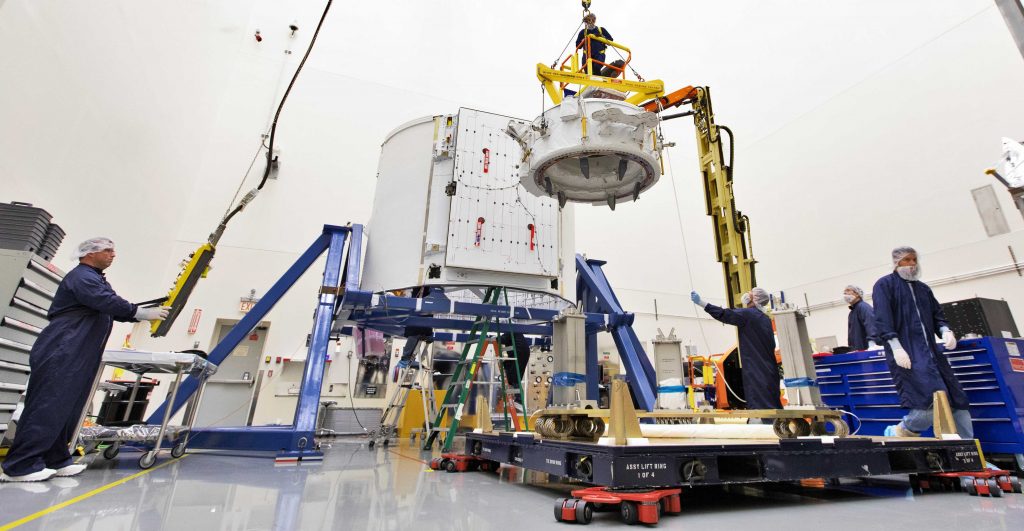
Meanwhile, CRS-18 is also expected to be the first time a NASA mission launches on a flight-proven Falcon 9 Block 5 booster, potentially paving the way for NASA’s first launch on a twice-flown Block 5 booster with CRS-19 – hopefully later this year. Of course, that subsequent milestone will depend on a successful launch and landing during CRS-18. Falcon 9 booster B1056 – previously tasked with launching CRS-17 on May 4th, 2019 – is assigned to the mission and has been speedily refurbished for its next mission. Assuming the static fire goes well and there are no anomalies over the next 11 days, B1056 will launch twice in 78 days, a close second to B1048, B1052, and B1053 – all tied for first place at 74 days.
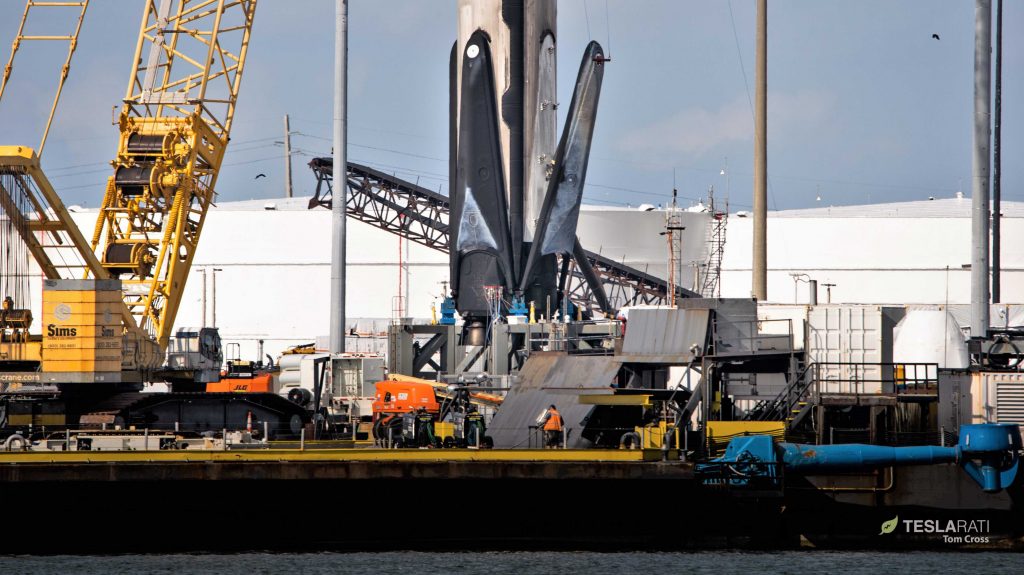
AMOS-17
Following CRS-18, SpaceX’s next launch is expected to occur soon after, launching Spacecom’s AMOS-17 communications satellite on a Falcon 9 (likely flight-proven) no earlier than early-August, although the tail-end of July is also a possibility. This mission will be extremely symbolic, owing to the fact that AMOS-17 is effectively an insurance-funded replacement for AMOS-6, destroyed on September 1st, 2016 when Falcon 9 suffered a catastrophic failure.
Thankfully, since that failure nearly three years ago, Falcon 9 has performed admirably, suffering no publicly-known failures or partial failures during its primary mission, although SpaceX has suffered two failed booster landing attempts over the same period.
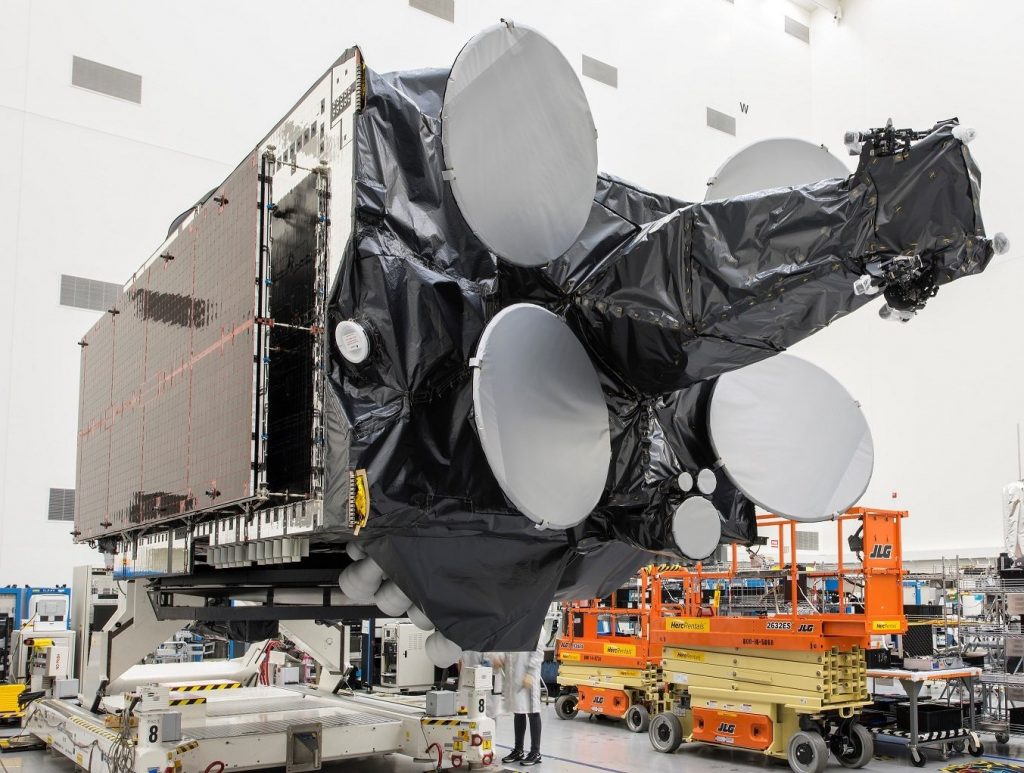
It’s possible that the mystery booster spotted above is meant for AMOS-17, although that’s far from certain. Based on an image showing the core number, it is almost certainly B104X, while the second digit could easily be a 7 or a 9. If the booster in question is B1047, the odds are much better that it’s wrapping up refurbishment and waiting at 39A for CRS-18 to launch before heading to LC-40.
Starlink?
On the other hand, if the booster in question is B1049, it can be all but guaranteed that AMOS-17 will not launch on it, the reason being that – quite literally burned by its last experience with Falcon 9 – Spacecom probably doesn’t want to be the first SpaceX customer to launch on a thrice-flown booster. At the same time, SpaceX is probably exceptionally conscious of the need to ensure mission success and has no interest in adding risk to the AMOS-17 mission profile, no matter how minor.
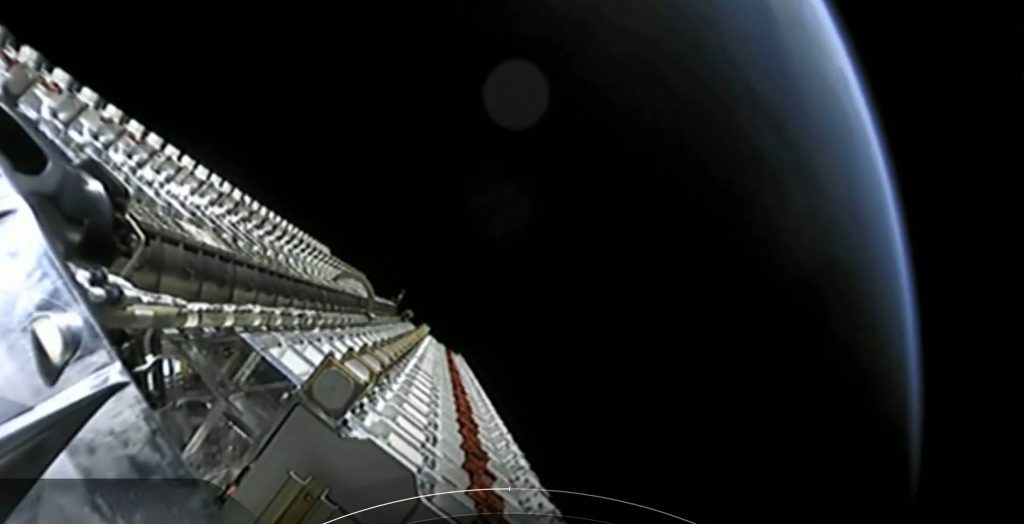
B1049 launched for the third time in support of SpaceX’s first dedicated Starlink launch on May 23rd, known internally as Starlink v0.9. At this point in time, B1046.3 is believed to be assigned to Crew Dragon’s in-flight abort (IFA) test, expected no earlier than Q4 2019. B1048.3’s status is unknown since the rocket successfully completed its third launch in February 2019. With B1049’s newfound history as the first SpaceX booster to launch on a completely internal mission, it would make a lot of sense for SpaceX to reuse B1049 for the next Starlink mission.
Simultaneously, SpaceX could demonstrate the first launch of a thrice-flown Falcon 9 booster without pushing that risk onto customers, opening up B1048 and future thrice-flown boosters for near-term commercial missions. A step further, this would set SpaceX up perfectly to use internal Starlink missions as full-fidelity demonstrations of booster reuse milestones, going from the four launches to five, six, seven, and beyond.
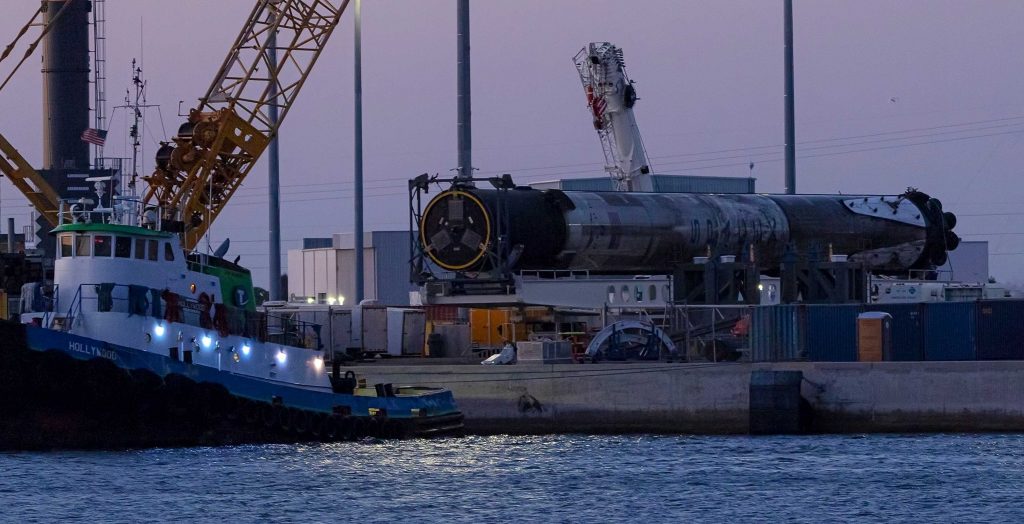
Check out Teslarati’s Marketplace! We offer Tesla accessories, including for the Tesla Cybertruck and Tesla Model 3.

News
Tesla China rolls out Model Y upgrades, launches low-interest financing
These strategies are aimed at improving the ownership experience and keeping vehicle pricing competitive in the world’s largest electric vehicle market.

Tesla has rolled out minor updates to the five-seat Model Y in China, upgrading the vehicle’s center display to a higher-resolution 16-inch 2K screen. The electric vehicle maker also introduced attractive financing options, including 7-year low-interest rates, to offset the new purchase tax on EVs.
These strategies are aimed at improving the ownership experience and keeping vehicle pricing competitive in the world’s largest electric vehicle market.
Five-seat Model Y gets larger, better display
With its recent update, all three variants of the five-seat Model Y now feature an upgraded 16-inch 2K resolution center display, which replaces the vehicle’s previous 15.4-inch 1080p panel. This screen was already used in the six-seat Model Y L, and it offered improved visual clarity. Tesla China has also updated the Model Y’s headliner to black, giving the vehicle a sleeker appearance.
Prices of the five-seat Model Y remain unchanged at RMB 263,500, RMB 288,500, and RMB 313,500 for the respective trims. This update enhances the cabin experience as domestic rivals are already adopting high-resolution screens. As noted in a CNEV Post report, some domestic automakers have begun rolling out vehicles equipped with 3K-resolution displays.
New financing offers
Tesla also launched ultra-long-term financing offers for its locally produced models in China, which include the Model 3 sedan, the five-seat Model Y, and the six-seat Model Y L, through January 31, 2026. The 7-year option features an annualized fee rate as low as 0.5%, which is equivalent to 0.98% interest. This is expected to save customers up to RMB 33,479 ($4,790) compared to standard rates.
A 5-year zero-interest plan is also available, and it has been extended to the Tesla Model Y L for the first time. These incentives help offset China’s new 5% purchase tax on New Energy Vehicles (NEVs) in 2026-2027. Some of Tesla’s rivals in China have announced in recent months that they would be covering the purchase tax owed by buyers early this year.
News
Tesla Model Y’s new feature lands driver in hot water from police officer
“He gave me a warning and told me to get it fixed.”
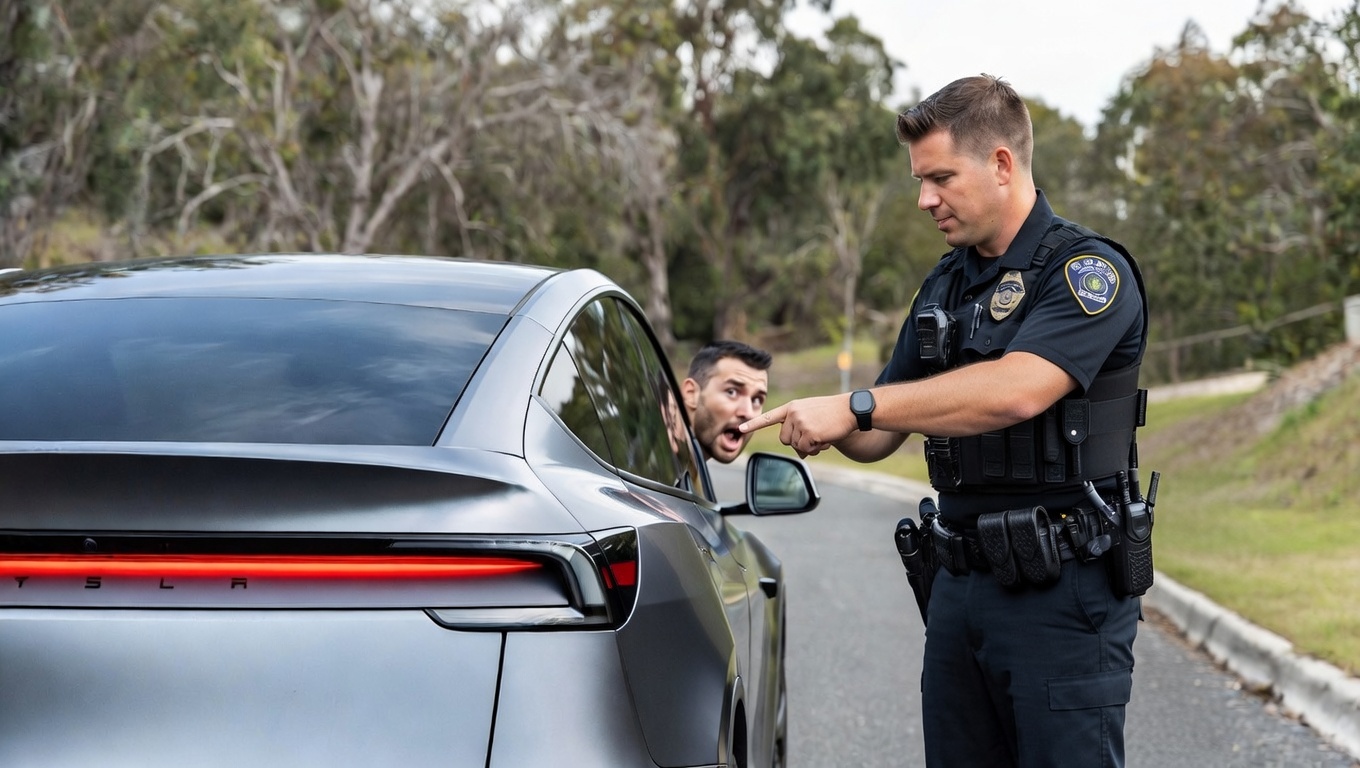
Tesla Model Y received a slew of both interior and exterior upgrades when the company refreshed its best-selling vehicle last year.
However, one of the more notable changes from an exterior perspective landed a driver in hot water with a local police officer, who was confused about the situation with the taillight bar and its ability to alert other drivers of a reduction in speed.
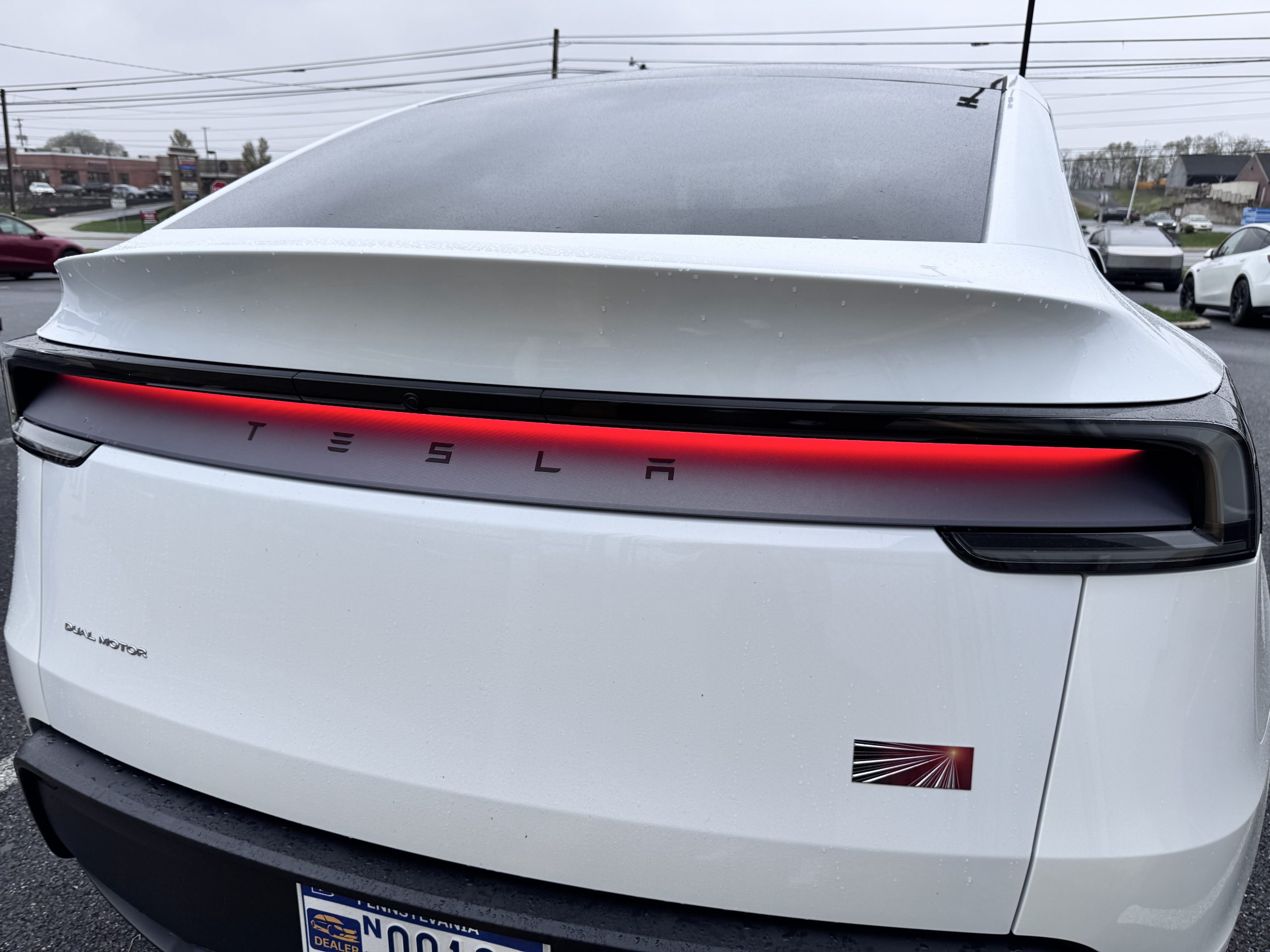
The new Tesla Model Y taillight with taillight glow
A Tesla Model Y owner in Indiana recently noted in a Facebook post that he was pulled over because a police officer thought the vehicle’s taillights were not turned on. However, the Model Y’s new rear light bar, which spans across the entire width of the vehicle, is more than visible in both light and dark conditions.
The incident, which was first spotted by Tesla Oracle, brings to light the interesting changes and perception of vehicle design that Tesla has brought forth with the new Model Y. We know some things might be head-scratching to some drivers, notably the Matrix Headlight technology present on the car, but this one truly baffled us.
The post stated:
“Just got pulled over for my tail lights not being “on” i told the officer it’s brand new. It has 1100 miles. I told him the red light bar is the taillight. The brake lights, both turn signals, and the red bar was on/worked. He told me that where the brake lights are, it should be illuminated there also. He gave me a warning and told me to get it fixed. Had anyone else had this kind of issue?”
Having the police officer tell a driver to “get it fixed” when it is a completely legal and functional design is pretty crazy.
However, the rear taillight bar, which glows and really gives the new Model Y a distinct difference between its previous iteration, is more than recognizable as a brake light and an indication of a reduction in speed.
Regulatory language for vehicle designs indicates that the light has to reach a certain number of lumens, or brightness. Lars Moravy indicated this on an episode of Jay Leno’s Garage when he and Tesla Chief Designer Franz von Holzhausen explained some of the details of the new Model Y.
This issue sparks some interesting dialogue people can have about vehicle design, and as more and more companies are adopting these futuristic looks, it seems law enforcement will have to get with the times and familiarize themselves with the regulations regarding exterior lights.
News
CES 2026 validates Tesla’s FSD strategy, but there’s a big lag for rivals: analyst
Ferragu shared his insights in a series of posts on social media platform X.
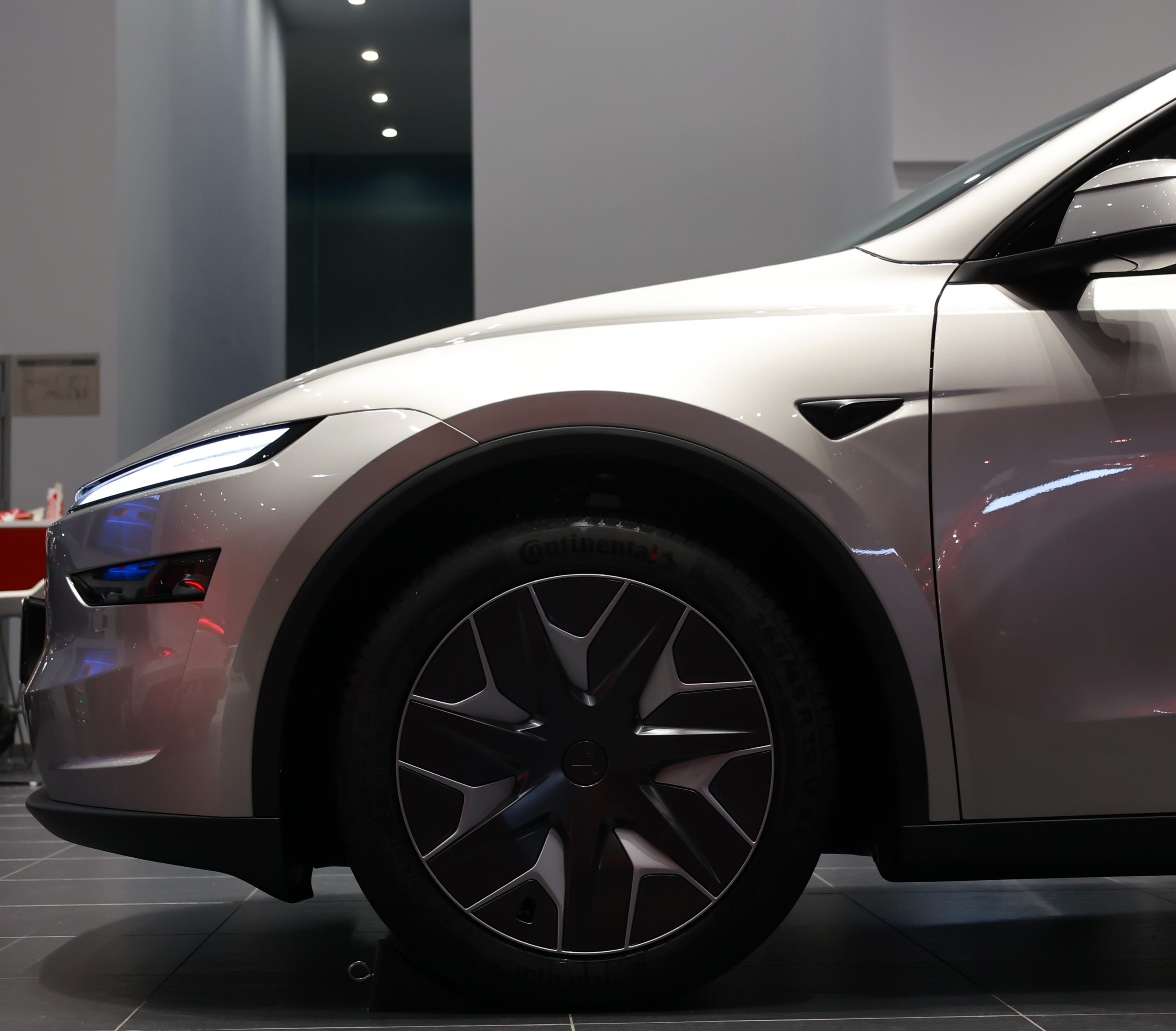
Longtime Tesla (NASDAQ:TSLA) bull and New Street Research analyst Philippe Ferragu has described CES 2026 as “The Great Validation Chamber” for Tesla’s autonomous driving efforts.
Ferragu shared his insights in a series of posts on social media platform X.
In a thread on X, Ferragu highlighted two key events that validated Tesla’s autonomy strategy at CES 2026: Mobileye’s focus on cost-efficient L2+ hardware and NVIDIA’s “Alpamayo,” which uses artificial intelligence to accelerate the development of autonomous driving systems.
As per the analyst, however, the validation of Tesla’s strategy on autonomous driving does not mean that the industry is catching up to the electric vehicle maker. Ferragu noted that ultimately, the industry still likely has a 12-year lag against Tesla.
“CES 2026 = The Great Validation Chamber for Tesla. The signal from Vegas is loud and clear: The industry isn’t catching up to Tesla; it is actively validating Tesla’s strategy… just with a 12-year lag. Two critical takeaways solidify our thesis:
“1) Mobileye validates the strategy but flies lower and behind. Great win for Mobileye; white flag for western OEMs, abandoning the L4 dream to standardize cost-efficient L2+ hardware. Standardizing the equivalent of HW2 (2016) for 2028 – 12 years behind.
“2) Nvidia validates the Tesla stack with ‘Alpamayo,’ pivoting Physical AI towards Reasoning – Total vindication of FSD V13/V14’s architecture. Go to market will be the issue: Nvidia provides the kitchen (chips/models), but legacy OEMs still have to cook. Good luck with that,” Ferragu wrote in his thread on X.
Elon Musk, for his part, has responded to some of CES 2026’s developments on X. In response to comments on X about Alpamayo seemingly becoming a potential competitor to FSD, Musk stated that he is hoping Nvidia succeeds in its autonomous driving efforts.
That being said, Musk predicted that what “they will find is that it’s easy to get to 99% and then super hard to solve the long tail of the distribution.” He also noted that rivals systems such as Alpamayo will likely only put competitive pressure on Tesla in 5 or 6 years, or possibly even longer, considering the pace of the automotive industry as a whole.








